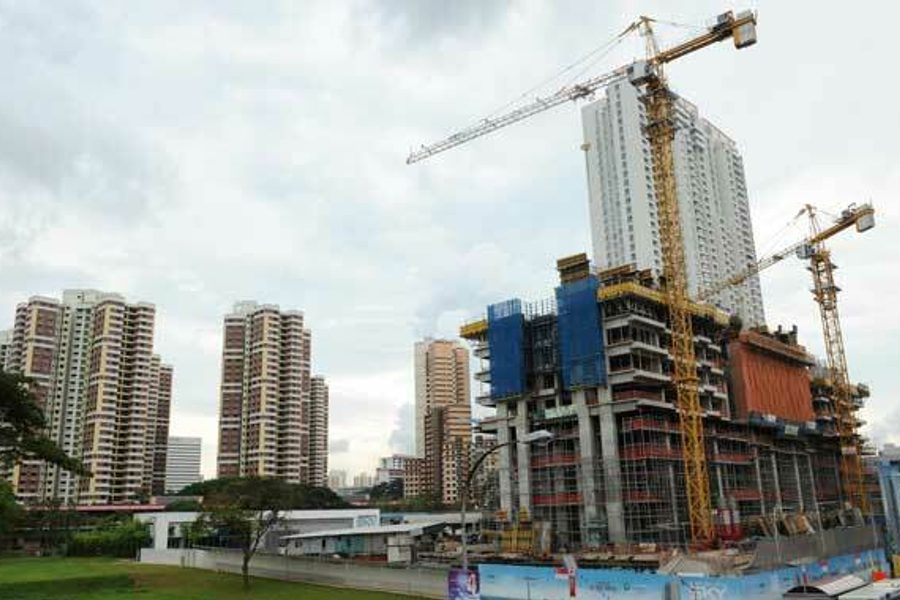Singapore’s Useful Peasants
As they power a robust recovery, the city-state’s foreign-born workers face a growing backlash.
Joseph B. Atkins

SINGAPORE – This city’s most famous expatriate writer, W. Somerset Maugham, once wrote of Southeast Asia’s peasant workers:
These patient, industrious folk carry on the same yokes, the same burdens as their ancestors carried so many generations back. The centuries have passed leaving no trace upon them. … n these countries of the East the most impressive, the most awe-inspiring monument of antiquity is neither temple, nor citadel, nor great wall, but man. The peasant with his immemorial usages belongs to an age far more ancient than Angkor Wat, the Great Wall of China, or the Pyramids of Egypt.
In many ways, those words are just as true today as they were in 1930.
This crossroads of Chinese, Malay, Indian and western cultures was recently ranked the most competitive economy in the world. Fueling that economy are the descendants of those “patient, industrious folk.” Nearly two out of every five residents in this city of 5 million is foreign-born. More than a half-million migrant workers from Bangladesh, India, Malaysia, Indonesia, the Philippines and China do the backbreaking work that helped Singapore emerge from its worst recession in history with 15.5 percent growth in the first quarter of this year.
One of the Pacific Rim’s economic “tigers,” Singapore is a citadel of neo-liberalism. Corporate taxes are low, and unemployment is 2.3 percent. Yet sales taxes are high, and blue-collar wages are abysmal. There’s no minimum wage, and the government offers scant protections against abuse and a limited social safety net. In the past 10 years, immigration has nearly doubled. And many of the migrants who clean the rooms and build the skyscrapers live in crowded, rat-infested dormitories with little relief from the sweltering tropical heat.
“[The government] has made some reforms, shown a real commitment to countering the worst abuses of workers, but this still leaves a long way to go,” says John Gee, president of the Singapore-based Transient Workers Count Too organization.
Workers have few means to protest their conditions. Under the semi-authoritarian, half-century rule of the People’s Action Party (PAP) and modern Singapore’s founder and current “Minister Mentor,” Lee Kuan Yew, public protest is strictly limited.
This is the city where American Michael Fay was famously caned for theft and vandalism in 1994. Many Singaporeans credit Minister Mentor Lee – officially retired but still a formidable presence as the father of current Prime Minister Lee Hsien Loong – and the tough measures he and PAP imposed for lifting the city out of the Third World.
“Lots of foreigners come here to work,” says Abo Rhaman B Abo Samad, a 55-year-old taxi driver. “Everybody has a job if you are not too choosy.” As for Lee Kuan Yew, Abo says, “He’s a smart man, a swell leader, a great leader. We have nothing, no natural resources. This man took us out of nothing.”
Ang Peng Hwa, who heads the journalism program at Nanyang Technological University in Singapore, says, “Wages are kept down for working people by immigrant workers, and the differential between the wealthy and the poor is growing.”
A backlash against immigrant workers is growing. “Some quite venomous anti-migrant worker statements may be heard in casual conversation,” Gee says. “It is easy politics all over the world: blame the foreigner.”
Yet, Gee says, “The construction sector would grind to a halt without migrant workers; likewise, the shipyard sector. Probably cleaning services would be badly hit, too. … Most people know that if foreign workers were excluded tomorrow, it would be catastrophic for the national economy.”
In other words, the peasant worker still has “his immemorial usages.” He still builds the temples and citadels, but he rarely gets to enjoy them.





